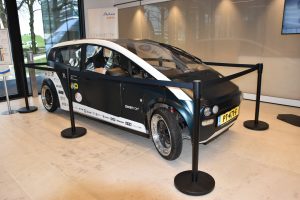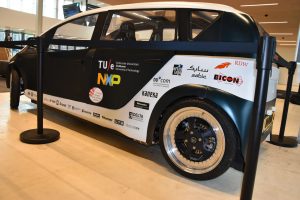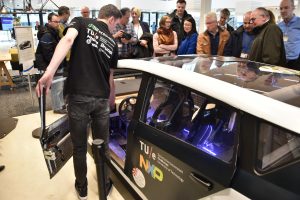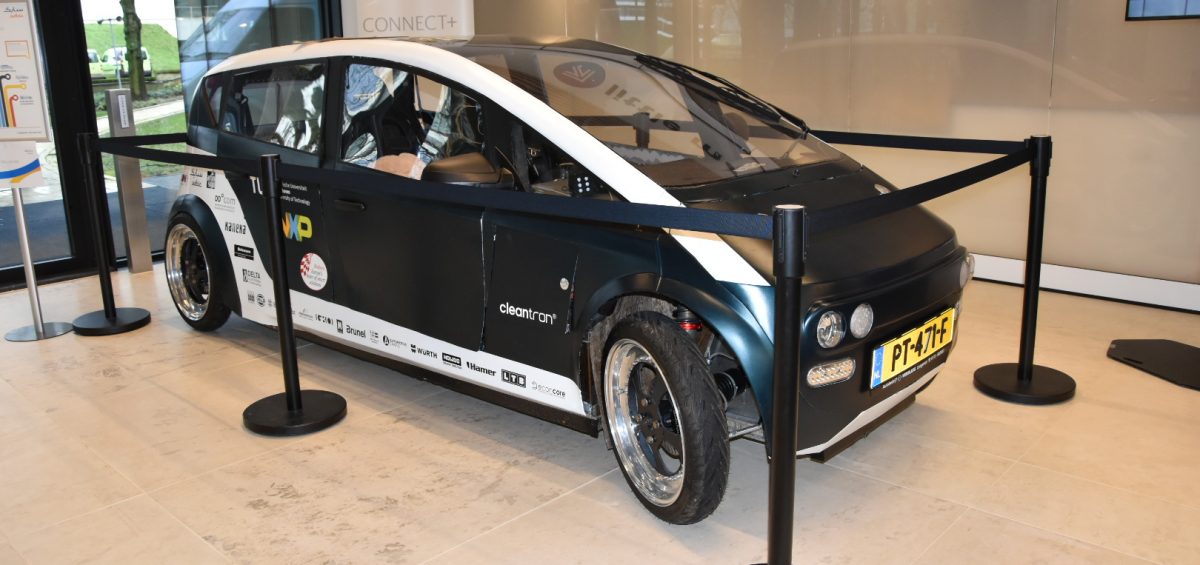LINA, the world’s first bio-composite car was presented to the campus by Eindhoven University of Technology students. This cool car is featuring SABIC materials.
The TU/e students in the TU/ecomotive team are motivated to improve mobility. Inspired by extreme performances concerning fuel consumption and sustainability, they search for pragmatic solutions. And with each next car model, they developed – LINA is their fourth model – they get closer to that goal: an advanced car that is a realistic proposition for the average car owner.
The car’s entire chassis, body and interior was produced from a combination of bio-based composites and bio-based plastics. The bio-composite comes from flax – a plant that can grow in any moderate climate. The bio-composite material has a strength/weight ratio similar to glass fiber, but its manufacturing is more sustainable. A honeycomb-shaped core produced from bio-plastic, known as PLA and made entirely from sugar beet, is placed in-between two flax composite sheets to provide stiffness to the total sandwich structure.
TU/ecomotive came to SABIC with their flax/polypropylene (PP) tape, which SABIC then consolidated into laminates, using existing tape equipment (for UDMAXTM) at the SABIC Technology Center at the campus. The student team then converted the laminates into the sandwich panels used to build the car’s interior chassis.
LINA also has windows and roof glazing parts made from LEXANTM MARGARDTM sheet, from SABIC’s Functional Forms business, which are scratch resistant, of high optical quality, impact resistant and, most importantly for LINA, lightweight.
LINA is a fully electric car, powered by a modular battery system, which can easily be replaced instead of reloaded. At a speed of 80 km/h it has a range of 100 kilometers (the team’s first model did 400 kilometers on 1 liter of regular fuel). A relevant feature of LINA: it carries an official license plate. More information: www.tuecomotive.nl







